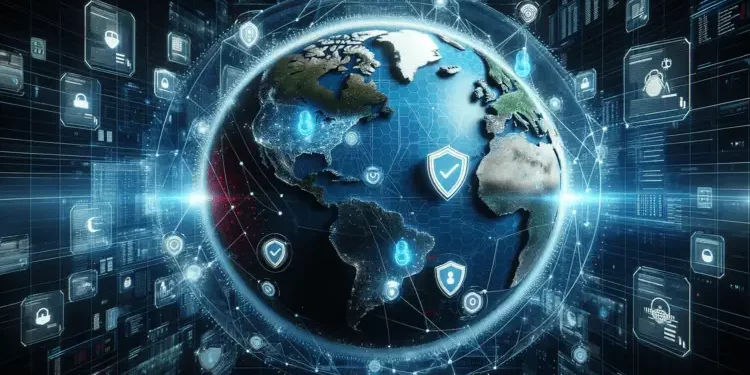In today’s interconnected world, security technology plays a pivotal role in safeguarding our digital assets, physical spaces, and personal information. The constant evolution of technology has both fortified our defenses and presented new vulnerabilities that require innovative solutions. Let’s examine the latest trends in the world of security services and technology.
We’re pleased to announce the availability of our newest cloud video management service, tailor-made to suit your organization’s unique phase and needs. The best part? You can start benefiting from it right away.
Understanding Security Technology
Security technology finds applications across various domains, including:
Access Control Systems
An access control system regulates entry to physical spaces or digital resources, including keycard access to a building, password-protected files, or biometric authentication.
Video Surveillance (CCTV)
One of the most popular methods of physical security, closed-circuit television systems provide real-time monitoring and recording of activities in and around a particular location. Video surveillance aids in deterring criminal activities and provides valuable evidence when incidents occur.
Intrusion Detection Systems (IDS)
An Intrusion detection alarm system continuously monitors networks for signs of unauthorized access or suspicious activity, and trigger alerts or take automated actions when potential threats are detected.
Firewall Systems
Firewalls are network security devices that filter incoming and outgoing traffic based on a set of predefined security rules. They act as barriers between a trusted internal network and an untrusted external network, like the internet.
Encryption Technologies
Encryption involves converting data into a secure format, making it unreadable without the correct decryption key. This technology is vital for safeguarding data during storage and transmission.
Key Threats and Challenges
The digital landscape is rife with challenges and threats that constantly evolve, demanding adaptive security measures. Common threats include:
Cyberattacks
Cyberattacks, including ransomware attacks, are on the rise. They exploit vulnerabilities in systems and can lead to data loss, financial losses, and damage to an organization’s reputation.
Data Breaches
Data breaches occur when unauthorized parties gain access to sensitive data and can have severe consequences, such as identity theft and loss of proprietary information.
Insider Threats
Insiders with malicious intent or who inadvertently compromise security can pose a significant risk. The best methods to combat insider threats include strict access controls and employee awareness training.
Security Trends and Technology for 2024

The constantly changing threat landscape underscores the need for security technology to evolve. This evolution is essential to stay ahead of adversaries who are equally innovative in their tactics.
AI and Machine Learning Integration
Artificial Intelligence (AI) and Machine Learning (ML) are revolutionizing the security industry. AI and ML algorithms are capable of enhancing threat detection, anomaly recognition, and pattern analysis, and can process vast amounts of data in real-time and identify potential security threats more accurately and rapidly than human operators.
Machine Learning, a subset of AI, allows systems to learn and adapt, improving their ability to identify and respond to security threats. This trend is exemplified by solutions like the Arcules VSaaS Platform, which leverages AI and ML to enhance security.
AI Object Detection
A cloud based video surveillance system like the one from Arcules utilize AI to recognize objects in video footage, which can be crucial for identifying threats or anomalies.
IoT Security
The proliferation of Internet of Things (IoT) devices brings immense benefits but also heightened security risks. Securing these devices is paramount. Key challenges in IoT security include firmware vulnerabilities and a lack of standardized security practices.
To address these challenges, security professionals are exploring solutions like device authentication and encryption. These measures ensure that only authorized devices can interact with IoT security systems, and data transmitted between devices is protected from interception.
Quantum-Safe Encryption
As quantum computing advances, it poses a significant threat to conventional encryption methods. Quantum computers can break existing encryption algorithms, potentially compromising the security of sensitive data.
Quantum-safe encryption, also known as post-quantum cryptography, is emerging as a solution that involves using encryption methods that are resistant to quantum attacks. Organizations must consider adopting these quantum-safe encryption technologies to protect their data from future quantum threats.
Zero Trust Architecture
Zero Trust Architecture (ZTA) is gaining prominence as a holistic security model that rejects the notion of trust based on location. In ZTA, no entity, whether inside or outside the network, is inherently trusted. This approach reduces the attack surface and enhances security.
The adoption of ZTA can be seen as a response to the evolving nature of security threats. By implementing ZTA, organizations can bolster their security posture and reduce the risks associated with traditional security models.
Biometric Authentication
Biometric authentication methods, such as facial recognition and fingerprint scanning, have advanced significantly. They offer a high level of security, as they are difficult to fake or replicate.
However, privacy concerns surrounding biometric data have also risen. Organizations need to implement strong encryption and access controls to protect biometric data and address these concerns effectively.
Cybersecurity Automation
Automation is transforming the way security is managed. It offers several benefits, including faster threat response and reduced human error. Security Orchestration, Automation, and Response (SOAR) platforms are examples of automated security tools.
By automating routine security tasks, organizations can free up security professionals to focus on more complex and strategic security challenges, enhancing overall security effectiveness.
The Constant Evolution of Security Technology
In a world where the only constant is change, physical security systems and technology must evolve to stay ahead of threats. The trends discussed in this article represent the future of security technology, and it’s crucial for organizations to adapt and implement these solutions to protect their digital assets and maintain a strong security posture. As we move forward, exploring and embracing these trends will be paramount in safeguarding our ever-evolving digital landscape.
If you’re interested in learning more about cloud – based video surveillance systems, please check out our Arcules Cloud Surveillance Solutions.
Schedule a free consultation with our experts today and take the first step towards a safer tomorrow.
